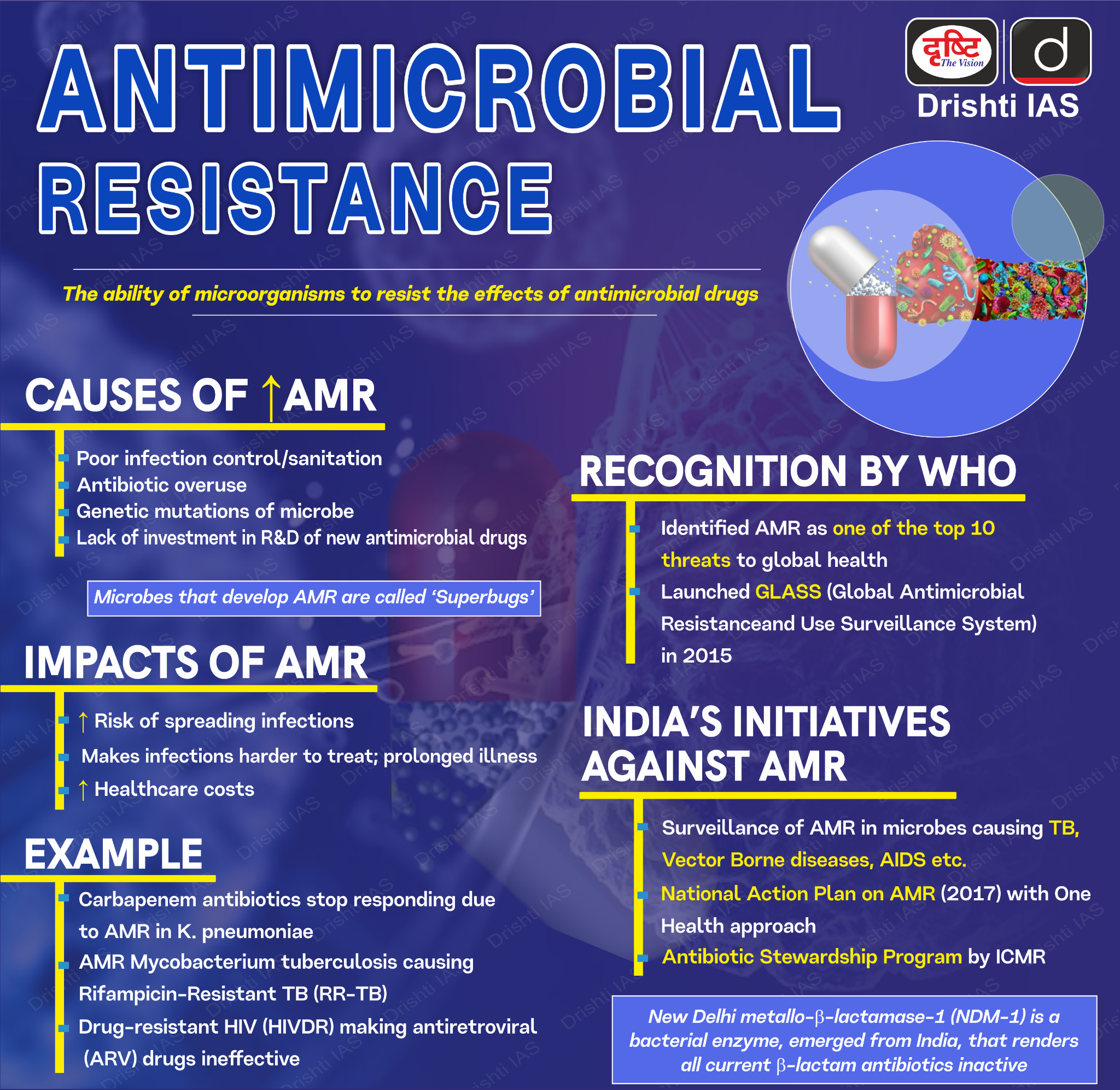Rapid Fire
Thermophilic Bacteria for AMR Treatment
- 06 Jun 2025
- 2 min read
Thermophilic bacteria thriving in extreme heat environments like hot springs in Rajgir (Bihar) hold great promise as sources of potent antibiotics against resistant bacteria and have significant industrial and agricultural applications.
- About the Study: In Rajgir, Actinobacteria, known producers of antimicrobials like streptomycin and tetracycline, comprised 40-43% of the bacterial population.
- A compound, diethyl phthalate, extracted from Actinomycetales bacterium, showed inhibition against Listeria monocytogenes, a dangerous foodborne pathogen.
- Rajgir hot springs were studied using 16S rRNA metagenomics to identify microbial diversity, especially focusing on antibiotic producers.
- Metagenomics is the study of genetic material (DNA/RNA) recovered directly from environmental samples (like air, soil, water, gut microbiomes) without the need for culturing individual organisms in a lab.
- Significance of the Study: The extraction of potent antibacterial compounds is vital to combat antimicrobial resistance (AMR)—a silent epidemic fueled by antibiotic overuse.
- AMR has increased healthcare costs, often requiring multiple antibiotics per infection, with the WHO projecting global healthcare costs to reach USD 1 trillion by 2050.
- About Thermophilic Bacteria: Thermophilic bacteria (heat lovers) inhabit hot springs, deep-sea vents, and compost piles, exploiting mineral-rich, low-competition niches.
- Thermophiles from Saudi Arabia produce antibiotics effective against gram-positive pathogenic bacteria.
- Application: PCR test enzyme (used for Covid-19) and a bacterial combination from a Leh hot spring promote plant growth.
| Read More: Metagenomics |







